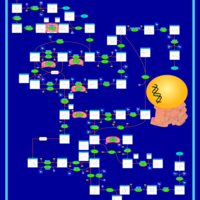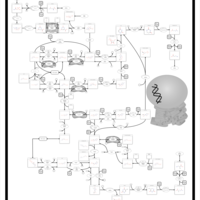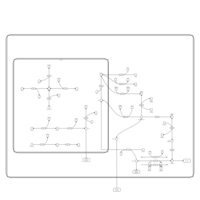| Pyrimidine metabolism |    |
| Nucleotide Sugars Metabolism |    |
| Transcription/Translation |    |
| Galactose Metabolism |    |
| Amino Sugar Metabolism |    |
| Starch and Sucrose Metabolism |    |
| Beta Ureidopropionase Deficiency |    |
| Dihydropyrimidinase Deficiency |    |
| Galactosemia |    |
| MNGIE (Mitochondrial Neurogastrointestinal Encephalopathy) |    |
| Sialuria or French Type Sialuria |    |
| UMP Synthase Deficiency (Orotic Aciduria) |    |
| Salla Disease/Infantile Sialic Acid Storage Disease |    |
| Azithromycin Action Pathway |    |
| Clarithromycin Action Pathway |    |
| Clindamycin Action Pathway |    |
| Erythromycin Action Pathway |    |
| Roxithromycin Action Pathway |    |
| Telithromycin Action Pathway |    |
| Amikacin Action Pathway |    |
| Gentamicin Action Pathway |    |
| Kanamycin Action Pathway |    |
| Neomycin Action Pathway |    |
| Netilmicin Action Pathway |    |
| Spectinomycin Action Pathway |    |
| Streptomycin Action Pathway |    |
| Clomocycline Action Pathway |    |
| Demeclocycline Action Pathway |    |
| Doxycycline Action Pathway |    |
| Minocycline Action Pathway |    |
| Oxytetracycline Action Pathway |    |
| Tetracycline Action Pathway |    |
| Lymecycline Action Pathway |    |
| Tay-Sachs Disease |    |
| Lactose Synthesis |    |
| DNA Replication Fork |    |
| Galactosemia II (GALK) |    |
| Galactosemia III |    |
| G(M2)-Gangliosidosis: Variant B, Tay-sachs disease |    |
| Glycogen synthetase deficiency |    |
| Glycogenosis, Type III. Cori disease, Debrancher glycogenosis |    |
| Glycogenosis, Type IV. Amylopectinosis, Anderson disease |    |
| Glycogenosis, Type VI. Hers disease |    |
| Mucopolysaccharidosis VI. Sly syndrome |    |
| Sucrase-isomaltase deficiency |    |
| Congenital disorder of glycosylation CDG-IId |    |
| GLUT-1 deficiency syndrome |    |
| Lamivudine Metabolism Pathway |    |
| Tobramycin Action Pathway |    |
| Tigecycline Action Pathway |    |
| Arbekacin Action Pathway |    |
| Paromomycin Action Pathway |    |
| Rolitetracycline Action Pathway |    |
| Methacycline Action Pathway |    |
| Lincomycin Action Pathway |    |
| Chloramphenicol Action Pathway |    |
| Troleandomycin Action Pathway |    |
| Josamycin Action Pathway |    |